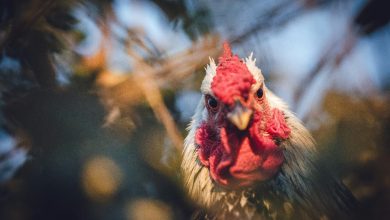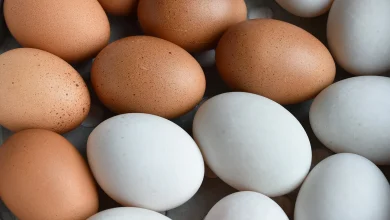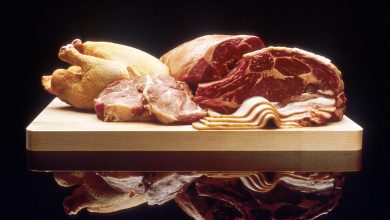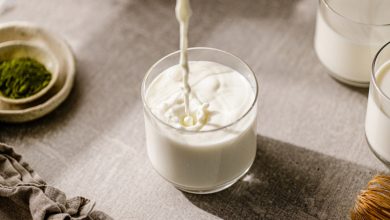How to identify poor & good layers in commercial layer farm
Dr. Rajesh Kumar Singh, (Livestock & Poultry Consultant), Jamshedpur, Jharkhand, India
Quality egg production is the primary goal for keeping layers, It is, therefore, important to monitor production of your flock, identifying poor layers that eat into your profits with minimal or simply no benefits.
During this process, you are likely to notice those birds that do not lay as much as others or those that don’t even lay at all.
Physical indicators to help you identify poor or good layers
Now before starting to point fingers on the birds, ensure you are not the problem. Ask yourself if you are providing good quality feeds, enough light and clean water. Check also if the birds are stressed or probably there are abrupt changes in their routine.
Also, assess the age of the birds because as your flock gets older, their production drops, with some even stop laying altogether.
Well, there are several physical indicators to help you identify poor or good layers.
A good layer should have flexible pubic bones, wide apart to allow three fingers to fit between them while those of a poor layer are tight, quite rigid and narrow, not allowing the fingers. This wide pubic bone space normally facilitates easy passage of eggs.
When you pull back the tail feathers of the bird and inspect the vent, it should be wide, oval, moist and warm for a good layer. The poor laying bird will have the vent dry, small/tight, round and cold.
Clean-cut, strong and refined heads
The eyes of a good layer should be large, bright, prominent and sparkling. A poor layer often has small, sleepy/dull and sunken eyes.
Good layers have clean-cut, strong, refined heads while poor layers have coarse, meaty/thin, blocky, weak looking head.
A good layer has an abdomen that is deep and soft, easily pliable without body fat accumulation by probing fingers while a poor layer has a hard and shallow abdomen. This depth of the abdomen is measured between the breast bone and the pubic bones.
Poor layers have dark-pigmented or dull skins, earlobes and shanks, while good layers are generally bleached or bright, though sometimes it depends on when you check them.
The bleaching is due to the diverting of yellow colour from the body portions to be deposited into the egg yolks. The loss of colour/bleaching effect is easily seen in yellow-skinned chicken on diets with sources of the colouring agents. The effect is less pronounced in white-skinned breeds, thus, more difficult to detect.
By behaviour, a good layer is normally alert to her surroundings and is not lazy. The bird is active and exhibits normal chicken behaviour like scratching litter and running around with others.
Poor layers, on the other hand, look dull and are most of the times droopy.
Delaying culling————-
Moulting period (when birds lose feathers) requires better understanding of the feathers. It is, thus, advisable to delay culling when a significant portion of the flock is moulting, lest you remove some good laying birds.
During this time, most hens stop producing eggs until moulting is complete. Laying for some chicken may not be affected, but their moulting may be lengthened.
Moulting in good layers starts late and is quite rapid while in poor layers, it starts early and is slow, making the latter appear better groomed.
The grooming does not reflect good laying, in fact, in late moulters, the feathers are replaced at the same time they are lost, enabling them to return to their full production sooner.
Dirty and ragged feathers————
The feathers of an active laying hen should be dirty and ragged looking. This is because they use much of their energy on producing eggs and are more prone to playing in the dirt or being followed by roosters. A hen that looks clean and perfect most of the time could be a poor layer.
Be careful when dealing with pullets (young hens), lest their size makes you rule them out as poor layers.
Some good laying hens mature late, therefore, allow the pullets to mature and show characteristics suggesting their laying potential. They may develop into good layers.
Egg lay per hen is best described in a flock. A flock of good layers would have a laying percentage of over 80 per cent, then starts dropping laying after molting to about 50 per cent. On average, in a week, a hen in this flock can give about five eggs.
A poor laying flock’s lay is below 60 per cent, after molting, they hardly go above 10 per cent.
In general, all the indicators will help you do away with the unproductive part of the flock, a practice known as culling.
Ideally, culling should be a continuous exercise throughout the entire production period until the whole flock is productive no more.
Benefits of cullings——————-
While disease is not an important reason to cull the unproductive birds farmers cull to allow more space for feeding and watering the productive lot. Culling enables you to realise an increased growth rate per bird and overall egg lay per hen ratio. It also ensures that resources are not wasted on unproductive flock.
These indicators may, however, vary between breeds and individual birds. Therefore, before you finally cull, adopt the most obvious method of telling whether a hen is laying or not by separating suspected unproductive birds from the rest of the flock and monitoring their production for a few days under plenty of feed and water. This may sometimes pose stress to the separated birds, but should put the last nail on them before you are sure to cull.
Most chickens that are culled, commonly known as ex-layers, are sold as meat. The best approach is to put them into a separate housing in a free-range setting so that their retirement doesn’t cost you any more feeds.
Proper planning, however, requires that you know best how you will deal with the eventual decline in egg production of your flock.
Process of Culling in Poultry Farming ————-
Culling is the name given to the process of eliminating undesirable birds or those birds which do not possess the qualities for giving enough benefit in return for their culture.
This is a very important aspect of poultry farming because an un-culled stock may give a serious setback to the farmer. Culling is a continuous operation throughout the year. Culling is advantageous because it helps in saving the feed, in preventing the spread of diseases and in bringing uniformity of the stock.
Culling of chickens is done at every stage of their life. One day old chick if shows the tendency of drowsiness, inactivity and remains thinner than the fellow ones of the same breed should be culled. Growing chicks with a slow rate of growth of body and feathers or having a protruded breast or thin thigh muscles or a deformed body should be culled. Laying birds can be culled before they start laying eggs and after that, at every six months. A good layer has a warm, full, bright red comb and wattles whereas in poor layers the comb is shrunken, cold and dull coloured.
The pubic bones in good layers are placed quite apart and can accommodate two or three fingers. The space between the keel and the pubic bones in such birds is 3-4 fingers apart. The morphological differences between a good and bad layer are given in the chart on the next page. In this way a poor layer should be culled. All hens should be invariably culled after three years of egg lying. For breeding purposes, only healthy cocks should be maintained at a cock- hen ratio of 1:10.
The egg production average of a farm can be obtained on “hen day” basis. Hen day for a particular period can be calculated by multiplying the number of hens by the number of days involved. For example, if there are 10 birds in a flock, the number of hen day during 30 days will be 10 x 30 = 300 days (provided all the birds survive during that full period). The number of hen days will decrease accordingly if some of the birds are destroyed during that period. So the average egg production can be obtained by dividing the number of eggs laid during a given period by the average number of the birds on hand during the same period.
Good Layer
1. Head small, lean and well proportionate
2. Beak strong, shining and well curved
3. Comb and wattles warm; brightly red and full
4. Eyes bright, well opened and alert
5. Neck short and strong
6. Body long, deep and proportionate
7. Back broad and straight
8. Skin thin, smooth and oily
9. Abdomen large and soft
10. Ventral oval, soft and moist
11. Feathers moult late
12. Shank thin and soft on back
13. Good appetite
14. Friendly temperament
Bad Layer
1. Head large and thick
2. Beak long, thin and dull coloured
3. Comb cold, shrunken and dull coloured
4. Eyes dull and sleepy
5. Neck long and thin
6. Body short, weak and thin
7. Back long and curved
8. Skin coarse and thick
9. Abdomen small and hard
10. Ventral small, dry and narrow
11. Feathers moult early
12. Shank hard on back
13. Poor appetite
14. Shy and nervous temperament.
Average number of eggs per hen = Total number of eggs/Average number of birds
The average number of egg-producing hens can be calculated by dividing hen day with the number of days.
Average number of egg-producing hen = Hen Day/Number of Days





Thanks so much for the elightenment.
Good work done .
Very helpful.
From Ghana .
Poultry farmer.